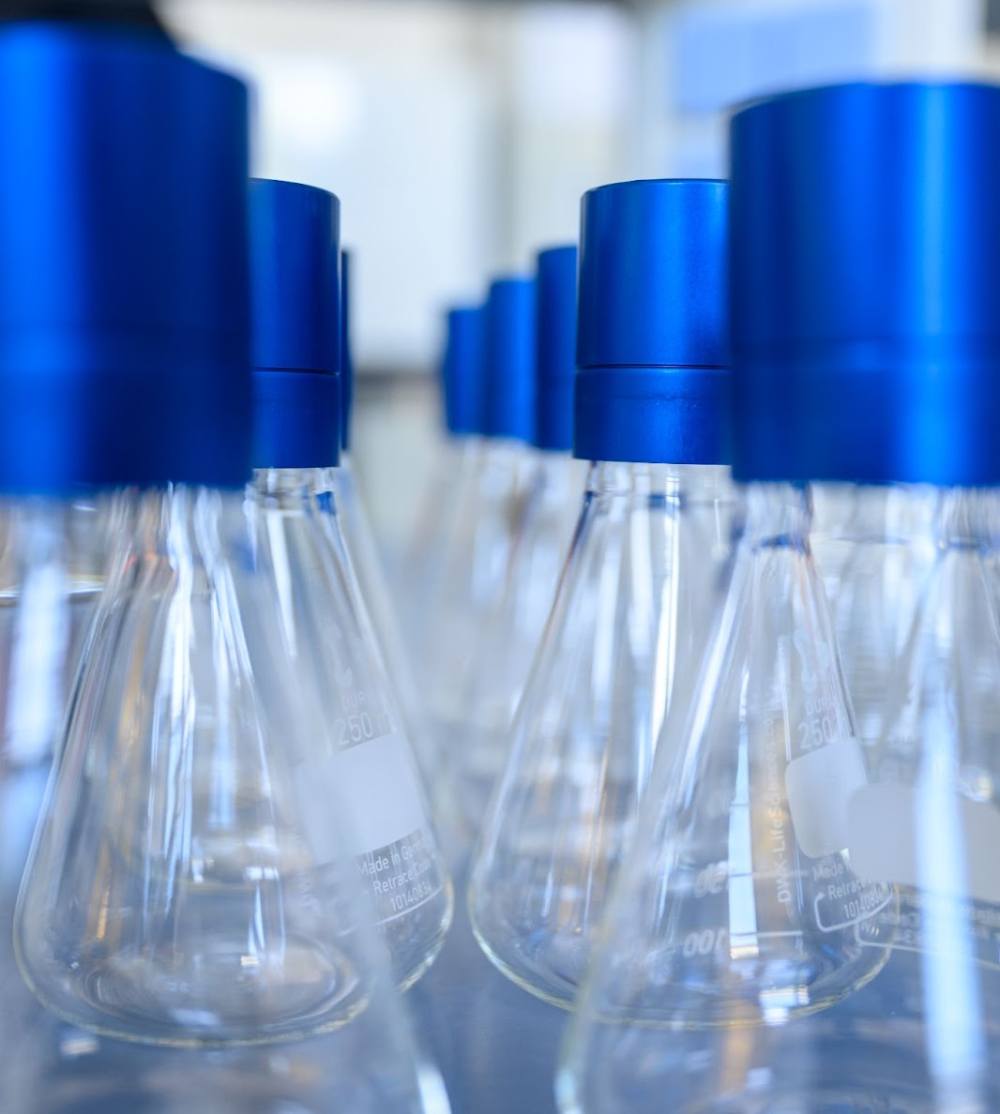Exploring Shake Flasks - The Powerhouse of Lab Experiments

 Conical flask, shake flask, e flask, titration flask; all names used to refer to the Erlenmeyer flask, a common piece of equipment found in any laboratory settings. Characterized by a conical shape with flat bottom and narrow neck, the ubiquitous glassware bears the name of its creator- Richard August Carl Emil Erlenmeyer, a German chemist. In this post, we explore the history of shake flasks, from their humble beginnings to their modern applications, and the impact they have on scientific research.
Conical flask, shake flask, e flask, titration flask; all names used to refer to the Erlenmeyer flask, a common piece of equipment found in any laboratory settings. Characterized by a conical shape with flat bottom and narrow neck, the ubiquitous glassware bears the name of its creator- Richard August Carl Emil Erlenmeyer, a German chemist. In this post, we explore the history of shake flasks, from their humble beginnings to their modern applications, and the impact they have on scientific research.
Origins of the Shake Flask
Designed in 1860 for the purpose of mixing and heating of liquids, Erlenmeyer used his flasks for the synthesis and isolation of numerous organic compounds. The long straight neck of the flask allowed for the precipitation of vapor while the upper section of the flask reduced the loss of solvent loss, making them especially appropriate for recrystallization.
In the early 1900s, the concept of shaking cultures in flasks gained traction, primarily due to the work of Alexander Fleming and his pioneering studies on the production of penicillin. But it wasn’t until 1932 that shake flask cultivations in Erlenmeyer flasks with breathable culture plugs was first developed for the submerged culture of Aspergillus niger (Kluyver and Perquin 1933). And from there, the flask made it’s way into the heart of bioprocessing. As the demand for shake flask cultivation increased, researchers and manufacturers began refining the design and functionality of these vessels.
Choosing the Right Shake Flask
To ensure the most suitable flask for your specific needs, it is important to carefully consider the requirements of your experiment.
-
Size
Shake flasks are available in a variety of sizes, ranging from 25 mL to as large as 5000 mL. Markings on the side specify the volume of liquid in the flask. Keep in mind, the usual filling volume for standard Erlenmeyer flasks is 20% of total volume (i.e. a 250 mL shake flask will contain 100 mL of culture). If you only have a small amount of material to work with then you may need to use smaller vessel types.
-
Material
Today’s flasks are commonly made of borosilicate glass, a tough material which is resistant to chemical corrosion and can withstand extreme shifts in temperature without breaking. Glass flasks can be autoclaved and reused, making them ideal for most microbial applications.
Polypropylene is a commonly used material for plastic Erlenmeyer flasks, offering durability in a lightweight design. Often considered single-use, plastic flasks can be better suited for instances where contamination is a primary concern. However, it's important to note that certain chemicals can have adverse reactions with plastic flasks, potentially affecting the accuracy of measurements taken during experiments.
-
Design
While we already described a typical Erlenmeyer flask (conical body with a wider base and a cylindrical neck), some applications may require a more sophisticated design. Flasks with baffles can be used to increase aeration, “breaking” the uniform swirling pattern created in non-baffled flasks. Additionally, they may be a preferred vessel type when working with more viscous cultures as it can introduce impediments to certain microbial aggregation or sedimentation. While these factors may appear advantageous, the presence of baffles can contribute to an increased risk of foam formation and potentially lead to more varied results.
-
Closure Types
Different closures for flasks are available to help prevent contamination while allowing for aeration of the culture. Closures include basic cotton plugs, metal caps, silicone sponges and even single-use filter caps. Again, the closure chosen will be largely based on the needs of your experiment. Possible spills during shaking or vapors can lend to contamination concerns when using cotton or reusable toppers.
So Why The Shake Flask In Bioprocessing?
-
Cost-effective: Shake flasks are significantly less expensive compared to bioreactors, making them a cost-effective option, especially for small-scale experiments or research laboratories with limited budgets.
-
Simplicity and ease of use: Shake flasks are relatively simple to set up and operate. They require minimal equipment and infrastructure, making them accessible to researchers without extensive technical expertise. They are commonly used in early-stage research and development.
-
Flexibility and versatility: Shake flasks offer greater flexibility in terms of experimental design and culture conditions. Researchers can easily modify parameters such as agitation speed, temperature, and aeration manually, allowing for quick adjustments and optimization of fermentation conditions. The ability to easily add or remove shake flasks from the experiment provides further flexibility in scaling the size of experiments up or down.
-
High oxygen transfer rate: Shake flasks, due to the shaking motion, provide good oxygen transfer rates to the microbial culture. This helps in supporting aerobic fermentation and the growth of oxygen-dependent microorganisms.
-
Easy sampling and analysis: Shake flasks allow for easy and frequent sampling of the culture during fermentation. This facilitates the monitoring of key parameters, such as microbial growth, metabolite production, and pH, enabling researchers to make informed decisions and adjustments during the process. Today, modern sensors even enable real-time and online data acquisition which further facilitates process monitoring and control.
-
Scalability: Shake flask cultures can serve as a preliminary screening tool before moving to larger-scale bioreactors. The results obtained from shake flask experiments can provide valuable insights and help optimize conditions for subsequent scale-up in bioreactors.
-
Reduced contamination risk: Depending on the material, shake flasks can be easily cleaned or disposed of, minimizing the risk of cross-contamination between different fermentation runs. This is particularly important when working with susceptible organisms or when conducting experiments that require strict control over the microbial culture.
The Future of Shake Flasks
Shake flasks have come a long way since their inception, evolving from simple vessels to sophisticated cultivation systems. Their contribution to scientific research cannot be overstated, as they have played a pivotal role in numerous discoveries and advancements in microbiology and biotechnology. With continuous improvements and innovative approaches, shake flasks will undoubtedly remain a cornerstone of laboratory cultivation, empowering scientists to unravel the mysteries of life on a microscopic scale.
